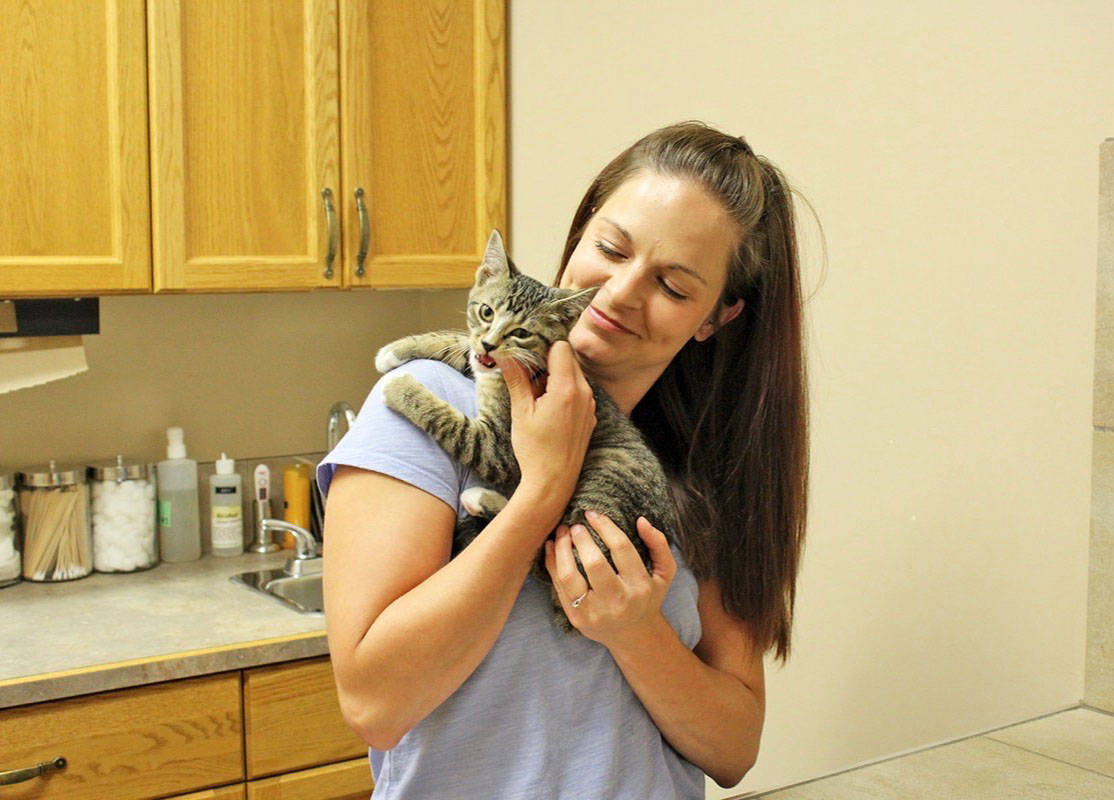Operation Tom Cat, which launched earlier this month, is a no cost neuter project for male cats owned by low income families in Central Alberta.
Operated by Whisker Rescue, the project is funded primarily by a $12,000 grant through the Alberta Government’s Community Initiatives Program, along with donations from local vet clinics, including Whisker Rescue and Zoetis, an animal health company who is donating all the vaccines, some of the dewormers and ear mite treatment.
“We’re going to do 200 male cats in one year time. That is our goal,” said Amy Lockhart, president of Whisker Rescue and project manager for Operation Tom Cat.
This will be the third highest volume project Whisker Rescue has taken part in.
They did a Rural Cat Roundup, which was a spay/neuter project for farm and acreage owners where they spayed and neutered 225 cats. They also did one through the CALICO project, which stands for Caring About Low Income Cat Owners, where they spayed or neutered 100 cats.
“Once this one is done, we will have done over 500 cats,” she said.
Operation Tom Cat will run for a whole year until next August.
She said they believe strongly in these high volume spay and neuter projects because every year, spring and summer, Whisker Rescue, other rescue facilities and animal control are overwhelmed with kittens.
“All of us put together can’t keep up, so the only humane solution is the spay and neutering, which has proved to bring down the population, and you can have a healthier population,” said Lockhart.
She said they could always run an adoption program, but that never solves the problem, as their will always be a never ending amount of cats going through their facility.
“This is hopefully a way for us to get control of the cat population.”
Lockhart said there are many important benefits to neutering cats, including a healthier population with less kittens on the streets and less cats facing neglect and suffering.
“We’ve had so many little kittens get hit on the side of the road this summer because they’re out and they’re stray, so it helps other cats, but neutering your own cat also helps your own cat. It lowers the need to roam.”
She said neutering is also supposed to lower aggression in the cat, so they aren’t fighting with other cats or even family members.
“This project is also vaccinating all the cats. They’re going to be vaccinated against three major viruses, so it’s better for all the cats out there, but it’s also better for your own cat as well.”
Lockhart recommends people get their cat neutered around the six month mark.
Application forms for this program can be found at a few vet clinics around the area, including Deer Park Pet Hospital, Central Animal Clinic, Lacombe Vet Centre and Animal Emergency Hospital. People can also download the form from whiskerrescue.com to apply.
“There’s clinics in Red Deer helping and clinics in Lacombe helping and you can apply pretty much as long as you live in Central Alberta.”
Meanwhile, Lockhart added the issue of stray cats in Red Deer is a big one.
“I really wish that more people could see the big picture and see the number of kittens that turn up around the communities, cats that show up on people’s properties, on people’s farms, on acreages. They’re suffering and they’re out in the cold.”
She said animal rescues and animal controls can only do so much.
“When we’re at capacity, we’re at capacity,” she said, adding that every year they hit capacity, but more and more cats keep showing up.
And it’s not just a Red Deer issue, she said. It’s a provincial and North American problem too.
Whisker Rescue started in 2008 and has rescued over 3,000 cats.



